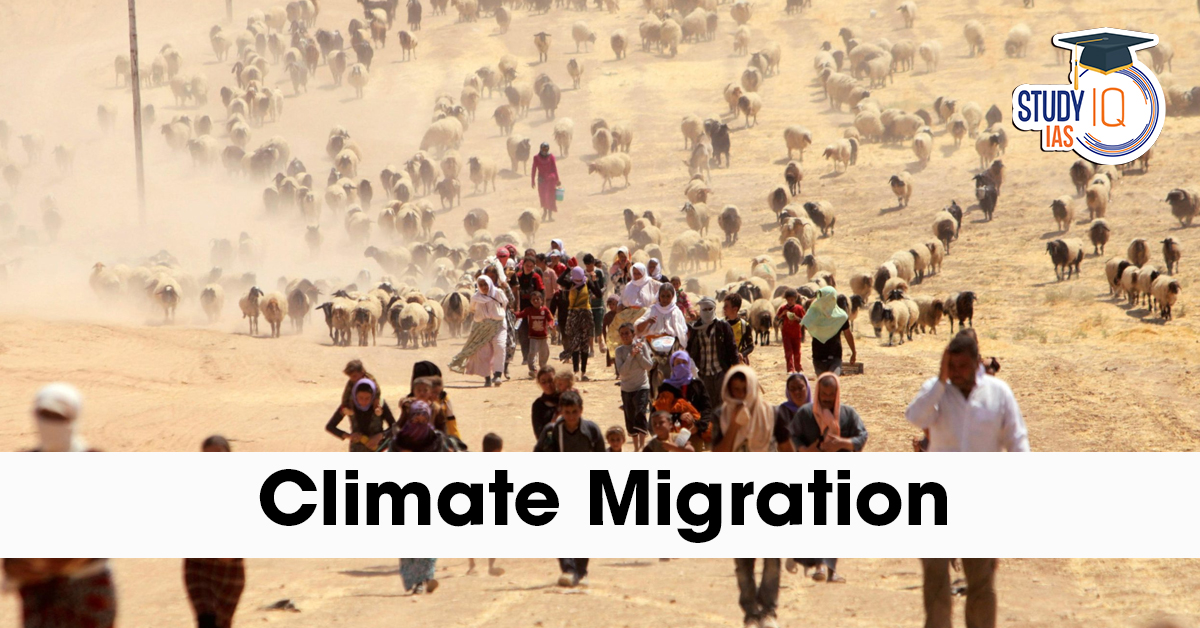Table of Contents
Context: Climate change is triggering both droughts and floods in regions like Bundelkhand (India), forcing vulnerable communities into distress-driven migration.
What is Climate Migration?
Climate migration refers to the movement of people forced to relocate due to sudden or gradual environmental changes caused by climate change, like droughts, floods, rising temperatures, or sea-level rise.
Why Climate Migration is a Crisis
- Forced Displacement: It is not voluntary but driven by collapsing livelihoods and ecosystems.
- Eg., In Bundelkhand (India), droughts in Panna and Datia districts have repeatedly failed crops, pushing farmers to migrate for survival.
- Debt and Bondage: Migrants often fall into exploitative cycles, especially in sectors like sugarcane cutting.
- Poor Living Conditions: Migrants live in slums or makeshift shelters without basic amenities.
- Family Disruption: Long-term separation, delayed remittances, and increased burden on women.
- Lack of Social Security: Migrants are excluded from basic welfare and healthcare systems.
- E.g., Migrants in urban informal sectors (construction, rickshaw pulling, etc.) lack access to ration cards, healthcare, or schooling for their children due to a lack of portability in welfare services.
- Loss of Local Knowledge and Ecosystem Stewardship: Especially in pastoral and agrarian communities.
What is to be Done?
- Recognise Migration as a Development Challenge: Integrate it into climate adaptation policies.
- Invest in Local Adaptation: Promote drought-resilient crops, water harvesting, and soil conservation.
- Eg., In Bundelkhand, local women’s group Jal Sahelis are restoring ponds and promoting water harvesting, reducing water scarcity and migration.
- Ensure Social Protection: Provide welfare benefits and healthcare access to migrant families.
- Eg., Odisha’s Rural Urban Migration Portal.
- Support Livelihood Diversification: Create rural job opportunities beyond agriculture.
- Strengthen Land and Ecosystem Rights: Empower pastoralists and farmers to sustainably manage ecosystems.
- Build Safe Migration Pathways: With legal safeguards, skill training, and housing provisions.


 Bonnet Macaques: Habitat, Features, Beha...
Bonnet Macaques: Habitat, Features, Beha...
 Periyar Tiger Reserve, Map, Flora, Fauna...
Periyar Tiger Reserve, Map, Flora, Fauna...
 Project Cheetah in India, Objectives, Ch...
Project Cheetah in India, Objectives, Ch...

























